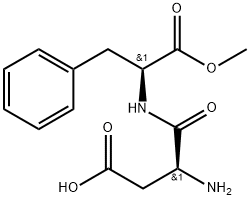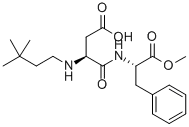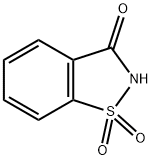Sucralose
Synonym(s):1,6-Dichloro-1,6-dideoxy-β-D -fructofuranosyl-4-chloro-4-deoxy-α-D -galactopyranoside;E955;Sucralose;Trichlorosucrose
- CAS NO.:56038-13-2
- Empirical Formula: C12H19Cl3O8
- Molecular Weight: 397.63
- MDL number: MFCD03648615
- EINECS: 259-952-2
- SAFETY DATA SHEET (SDS)
- Update Date: 2025-03-17 18:28:27
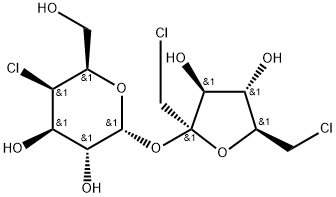
What is Sucralose?
Description
Sucralose is the only non-caloric sweetener made from sugar. It is in fact the latest non nutritive sweetener to have been approved by US FDA and other regulatory bodies and have hit the markets .
Sucralose is derived from sugar through a multi-step patented manufacturing process that selectively substitutes three atoms of chlorine for three hydroxyl groups on the sugar molecule. This change produces a sweetener that has no calories, yet is 600 times sweeter than sucrose, making it roughly twice as sweet as saccharin and four times as sweet as aspartame.
Chemical properties
Sucralose is a white to off-white colored, free-flowing, crystalline powder.
History
Sucralose, 1,6-dichloro-1,6-dideoxy-β-D-fructofuranosyl- 4-chloro-4-deoxy-α-D-galactopyranoside, is a trichloro-galactosucrose sweetener developed by the British sugar company Tate & Lyle during the 1970s (U.S. Pat. 4,343,934 (Aug. 10, 1982), M. R. Jenner and D. Waite (to Talres Development), (U.S. Pat. 4,362,869 (Dec. 7, 1982), M. R. Jenner and co-workers (to Talres Development), and (U.S. Pat. 4,435,440 (Mar. 6, 1984), L. Hough, S. P. Phadnis, and R. A. Khan (to Tate & Lyle). It was licensed to McNeil-PPC, Inc., a Johnson & Johnson subsidiary, in the United States until a new agreement took place in February, 2004. McNeil Nutritionals retained ownership of SPLENDA Brand and the right for its worldwide retail and food service business. Tate & Lyle became the sole manufacturer of SPLENDA Brand sucralose and owned the right for its worldwide ingredient sales.
The Uses of Sucralose
Sucralose (1,6-dichloro-1,6-dideoxy-p-fructofuranosyl-4-chloro-oc-
D-galactopyra- noside) is a nonnutritive sweetener based on sucrose. It
is selectively chlorinated and the glycoside link between the two rings
is resistant to hydrolysis by acid or enzymes, so it is not metabolized. It
has 400 to 800 times the sweetness of sucrose, is very soluble in water,
and is stable in heat. It can be used in food products that are baked or
fried.
Sucralose is produced by the selective chlorination of the sucrose molecule
using a patented process by Tate and LyIe that replaces the three
hydroxyl groups (OH) with three chlorine (Cl) atoms.
This modified sugar is minimally absorbed by the body and passes out
unchanged. It was approved for use in foods and beverages in 1999 in
the United States.
The Uses of Sucralose
A low-calorie artificial sweetener
The Uses of Sucralose
antiprotozoal
The Uses of Sucralose
High intensity sweetener manufactured by replacing three hydroxyl groups on the sucrose molecule with three chlorine atoms. The results are a sweetener of 0 cal that is not digested. It is 600 times as sweet as sugar with a similar flavor profile. It is heat stable, readily soluble, and maintains its stability at elevated temperatures. It has been approved for use in specific categories that include baked products, beverages, confectioneries, and certain desserts and toppings.
What are the applications of Application
Sucralose is an activator of T1R2 and T1R3
Definition
ChEBI: A disaccharide derivative consisting of 4-chloro-4-deoxy-alpha-D-galactopyranose and 1,6-dichloro-1,6-dideoxy-beta-D-fructofuranose units linked by a glycosidic bond.
Production Methods
Sucralose may be prepared by a variety of methods that involve the selective substitution of three sucrose hydroxyl groups by chlorine. Sucralose can also be synthesized by the reaction of sucrose (or an acetate) with thionyl chloride.
General Description
Certified pharmaceutical secondary standards for application in quality control provide pharma laboratories and manufacturers with a convenient and cost-effective alternative to pharmacopeia primary standards.
Sucralose is a polar, chlorinated sugar synthesized from saccharose precursor. It is widely used as a sweetener in a number of food and beverage products.
Pharmaceutical Applications
Sucralose is used as a sweetening agent in beverages, foods, and pharmaceutical applications. It has a sweetening power approximately 300–1000 times that of sucrose and has no aftertaste. It has no nutritional value, is noncariogenic, does not promote dental caries, and produces no glycemic response.
Biochem/physiol Actions
A synthetic sweet tastant detectable by humans. Activates T1R2/T1R3 sweet taste receptors on enteroendocrine cells and elicits increased hormonal secretion of glucagon-like peptide-1 and glucose-dependent insulinotrophic peptide.
Safety
Sucralose is generally regarded as a nontoxic and nonirritant
material and is approved, in a number of countries, for use in food
products. Following oral consumption, sucralose is mainly unabsorbed
and is excreted in the feces.
The WHO has set an acceptable daily intake for sucralose of up
to 15 mg/kg body-weight.
LD50 (mouse, oral): > 16 g/kg
LD50 (rat, oral): > 10 g/kg
storage
Sucralose is a relatively stable material. In aqueous solution, at
highly acidic conditions (pH < 3), and at high temperatures
(≤35℃), it is hydrolyzed to a limited extent, producing 4-chloro-4-
deoxygalactose and 1,6-dichloro-1,6-dideoxyfructose. In food
products, sucralose remains stable throughout extended storage
periods, even at low pH. However, it is most stable at pH 5–6.
Sucralose should be stored in a well-closed container in a cool,
dry place, at a temperature not exceeding 21℃. Sucralose, when
heated at elevated temperatures, may break down with the release
of carbon dioxide, carbon monoxide, and minor amounts of
hydrogen chloride.
Regulatory Status
The FDA, in April 1998, approved sucralose for use as a tabletop sweetener and as an additive in a variety of food products. In the UK, sucralose was fully authorized for use in food products in 2005. It is also accepted for use in many other countries worldwide. Included in the Canadian List of Acceptable Nonmedicinal Ingredients.
Properties of Sucralose
| Melting point: | 115-1018°C |
| Boiling point: | 104-107 C |
| alpha | D +68.2° (c = 1.1 in ethanol) |
| Density | 1.375 g/cm |
| vapor pressure | 0Pa at 25℃ |
| storage temp. | 2-8°C |
| solubility | Do you have solubility information on this product that you would like to share |
| form | Powder |
| pka | 12.52±0.70(Predicted) |
| color | White |
| PH | 6-8 (100g/l, H2O, 20°C) |
| Odor | wh. cryst. powd., odorless, sweet taste |
| optical activity | [α]/D 86.0±2.0°, c = 1 in H2O |
| Water Solubility | Soluble in Water. |
| Merck | 14,8880 |
| BRN | 3654410 |
| Stability: | Hygroscopic |
| CAS DataBase Reference | 56038-13-2(CAS DataBase Reference) |
| EPA Substance Registry System | .alpha.-D-Galactopyranoside, 1,6-dichloro-1,6-dideoxy-.beta.-D-fructofuranosyl 4-chloro-4-deoxy- (56038-13-2) |
Safety information for Sucralose
Computed Descriptors for Sucralose
Sucralose manufacturer
Gangwal Healthcare Pvt Ltd
New Products
Methyl (R)-1-Boc-4,4-difluoropyrrolidine-2-carboxylate 2,2-Difluoropropylamine hydrochloride tert-butyl 3-bromoazetidine-1-carboxylate (R)-1-Boc-3-hydroxypyrrolidine DIFLUOROACETIC ANHYDRIDE 2,2-Difluoropropionic acid Diallylamine, 99% Calcium hydroxide, 95% Aluminum oxide, basic 2-Bromophenylacetonitrile, 97% L-tert-Leucine,97% N-Hydroxy-2-methylpropanimidamide 4-(3,4-Dichlorophenyl)-3,4-Dihydro-N-Methyl-1-(2H)-Naphthalenimine (Schiff Base) 2-AMINO-3,5-DIBROMO BENZALDEHYDE [ADBA] L-Glutamic Acid Dimethyl Ester Hcl 10-Methoxy-5H-dibenz[b,f]azepine 5-Cyanophthalide N, N-Carbonyldiimidazole (CDI) Dibenzoyl Peroxide Titanium Dioxide 2-(Methylthio) Benzonitrile Sodium Acetate Anhydrous Allopurinol 1,5-DibromopentaneRelated products of tetrahydrofuran
You may like
-
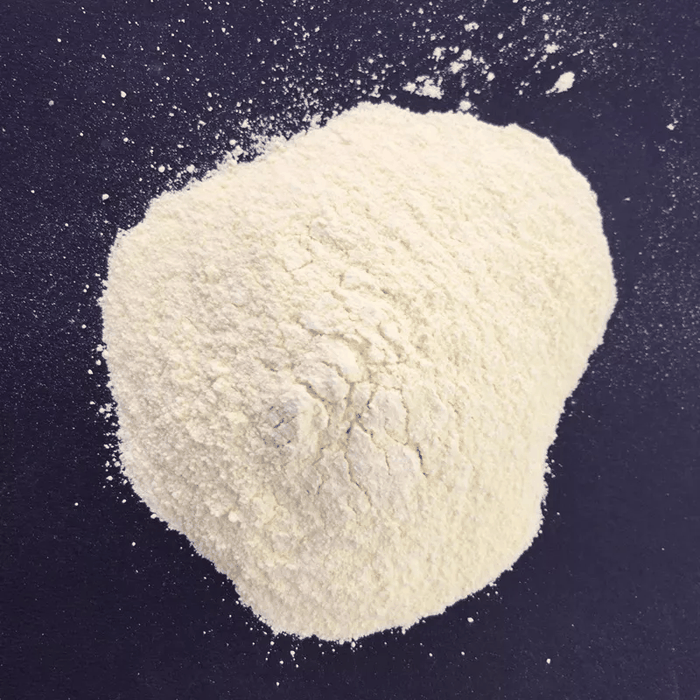 Sucralose 99%View Details
Sucralose 99%View Details -
 Sucralose 99%View Details
Sucralose 99%View Details -
 Sucralose CAS 56038-13-2View Details
Sucralose CAS 56038-13-2View Details
56038-13-2 -
 Sucralose 97% CAS 56038-13-2View Details
Sucralose 97% CAS 56038-13-2View Details
56038-13-2 -
 Sucralose, 98% CAS 56038-13-2View Details
Sucralose, 98% CAS 56038-13-2View Details
56038-13-2 -
 Sucralose CAS 56038-13-2View Details
Sucralose CAS 56038-13-2View Details
56038-13-2 -
 Sucralose CAS 56038-13-2View Details
Sucralose CAS 56038-13-2View Details
56038-13-2 -
 Sucralose CAS 56038-13-2View Details
Sucralose CAS 56038-13-2View Details
56038-13-2

